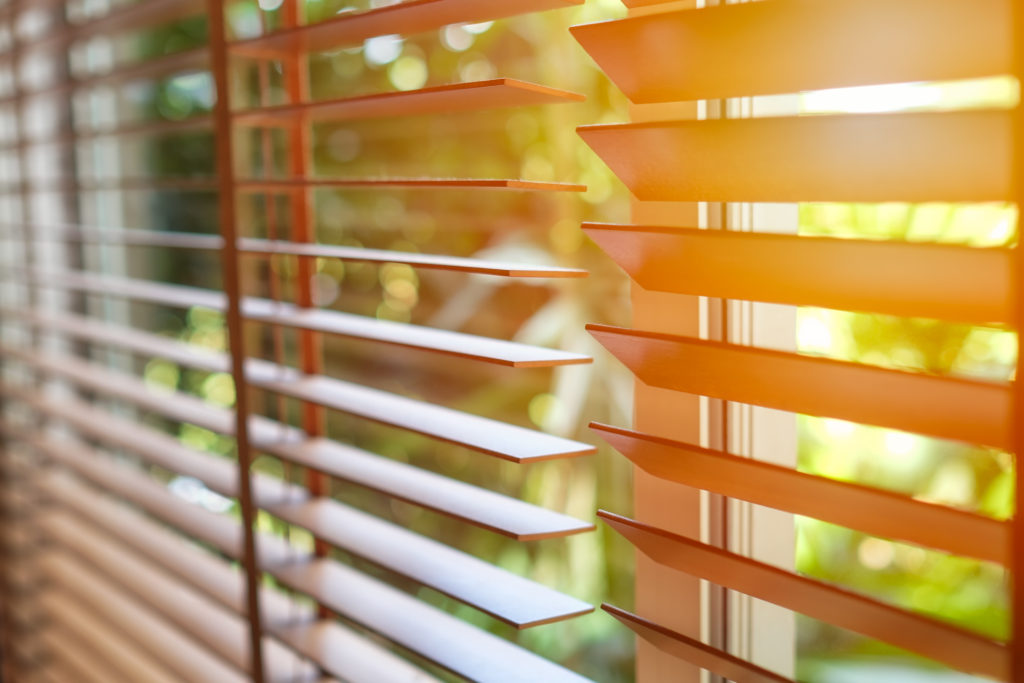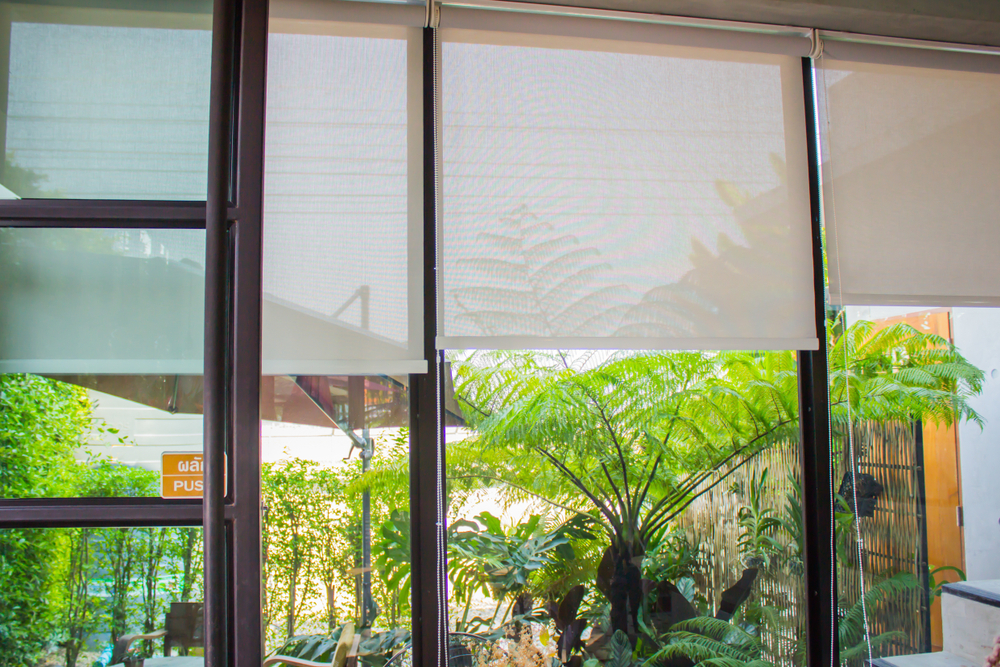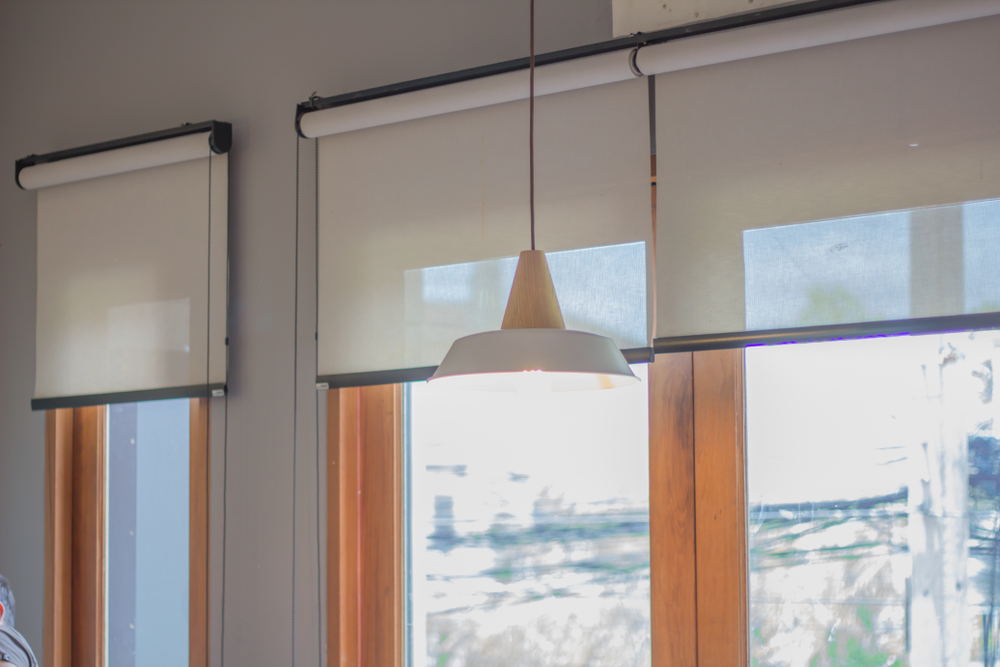When deciding on new blinds for your home, one thing becomes immediately clear: there are so many different types of window blinds out there. It’s almost overwhelming, but never fear! Our experts at Windows Floors & Décor are here to share their knowledge of some popular blinds available for your home. These options are not only visually appealing, but they can also save you money on your energy bills.
Which Type of Window Blinds Should You Install in Your Home?
1. Vertical Blinds
Vertical blinds, blinds that have individual slats along a track at the top of the blind, are one of the two most popular types of blinds. They’re incredibly versatile with many styles and materials available to fit the styling of almost any room. Typically, vertical blinds are used for large windows, so they’re an obvious choice for any room with tall windows and they’re a great way to visually blend a patio door into the walls next to it. Vertical blinds can also be used over smaller windows, and they’re a great option for anyone who has pets with a tendency to climb the curtains (cats, we love you, but please stop destroying our window treatments!).
Panel Blinds
Panel blinds are a variation on vertical blinds, the main difference being that panel blinds have much wider slats running along their track—usually two or three times wider than traditional vertical blinds. These are another good choice for patio doors and very large windows. The extra width of the slats makes panel blinds appear more elegant and less corporate than vertical blinds, especially since they’re much less common than regular vertical blinds.
2. Venetian Blinds (Horizontal Blinds)
 These are the most popular type of blinds—so popular that when you read the word “blinds” you probably automatically pictured Venetian blinds in your head! Venetian blinds are made with horizontal slats that attach together with string in a stack that can be raised up or down. These blinds also have the option to be tilted in order to control the amount of light that is let in.
These are the most popular type of blinds—so popular that when you read the word “blinds” you probably automatically pictured Venetian blinds in your head! Venetian blinds are made with horizontal slats that attach together with string in a stack that can be raised up or down. These blinds also have the option to be tilted in order to control the amount of light that is let in.
Mini Blinds
A variation on Venetian blinds that uses thinner slats of about 1” thick, mini blinds are typically used on smaller windows. They operate exactly the same way as regular Venetian blinds, but offer a more delicate aesthetic—and if you want to go even tinier than mini blinds, you can even opt for micro blinds which are only half the width of mini blinds!
3. Pleated Shades
Moving slightly away from the types of blinds that are technically “blinds,” pleated shades are very similar to Venetian blinds, being made of a piece of material that can fold into pleats by pulling a string threaded through it on either side. This allows the shade to be raised or lowered in the same way that Venetian blinds are operated, by pulling a cord that pulls the fabric up. Pleated shades have a softer look than traditional horizontal blinds because they lack the sharp right angles of the slats and they can provide more coverage of the window since there are no gaps in the material. Typically made from fabric or durable paper, pleated shades can help decrease energy use in the summer by choosing light colors which will reflect sunlight away from the window and result in energy cost savings.
4. Cellular Shades
Cellular shades, also known and honeycomb shades, look similar to pleated shades since they’re made from most of the same materials, but cellular shades use two different pieces of material that are pleated and then attached to each other front to back to make a pocket (like a honeycomb cell) in the middle. These pockets make cellular shades a great option for reducing energy costs. They also have the benefit of providing some noise insulation, depending on the material that’s used and the size of the cells.
5. Roller Shades
 One of the most versatile types of window blinds is roller shades. Roller shades are available in different styles, made from natural or synthetic materials and they’re exactly what they sound like: rolling up or down from the top to let the light in or block it out! The most economic roller shades are mounted to the top of your windows with all the hardware exposed, while the more elegant solutions involve valances or other options to hide the moving parts and leave the window treatment looking very polished and nearly invisible. Like other blinds on this list, roller shades are available with additional features like thermal or blackout linings.
One of the most versatile types of window blinds is roller shades. Roller shades are available in different styles, made from natural or synthetic materials and they’re exactly what they sound like: rolling up or down from the top to let the light in or block it out! The most economic roller shades are mounted to the top of your windows with all the hardware exposed, while the more elegant solutions involve valances or other options to hide the moving parts and leave the window treatment looking very polished and nearly invisible. Like other blinds on this list, roller shades are available with additional features like thermal or blackout linings.
Solar shades
If your main concern is reducing the amount of direct sunlight, glare and heat coming in through your windows, sun shades are a less harsh variation on roller shades that might perfectly fit your needs. Rather than being a solid fabric, solar shades are made of a sheer material—similar to a fabric screen—that will do the same thing for your living room that sunglasses do for your eyes on a sunny day – you’ll still be able to see out of the windows but the harsh afternoon sunlight won’t ruin anyone’s view of the television or shine into anyone’s face.
Bonus: Smart Blinds
With the ever-growing popularity of smart home technology, we’d be overlooking an increasingly common trend if we didn’t at least mention smart blinds. Smart blinds use technology build into the mechanisms of the blinds to sync with a smartphone app that allows users to either program the blinds to open and close on a schedule or operate the blinds from the app directly—this can result in a net savings when you consider the reduced energy costs from blinds that automatically close to block out the heat of the day. If you’re curious about smart blinds but don’t want to invest in outfitting your whole home with this new technology, you can purchase separate smart controllers to convert your existing blinds into smart blinds and start with one room to give it a try!
If you’re ready to start exploring different types of window blinds to revitalize any room in your home, contact the experts at Window Floors & Décor to get started today.





